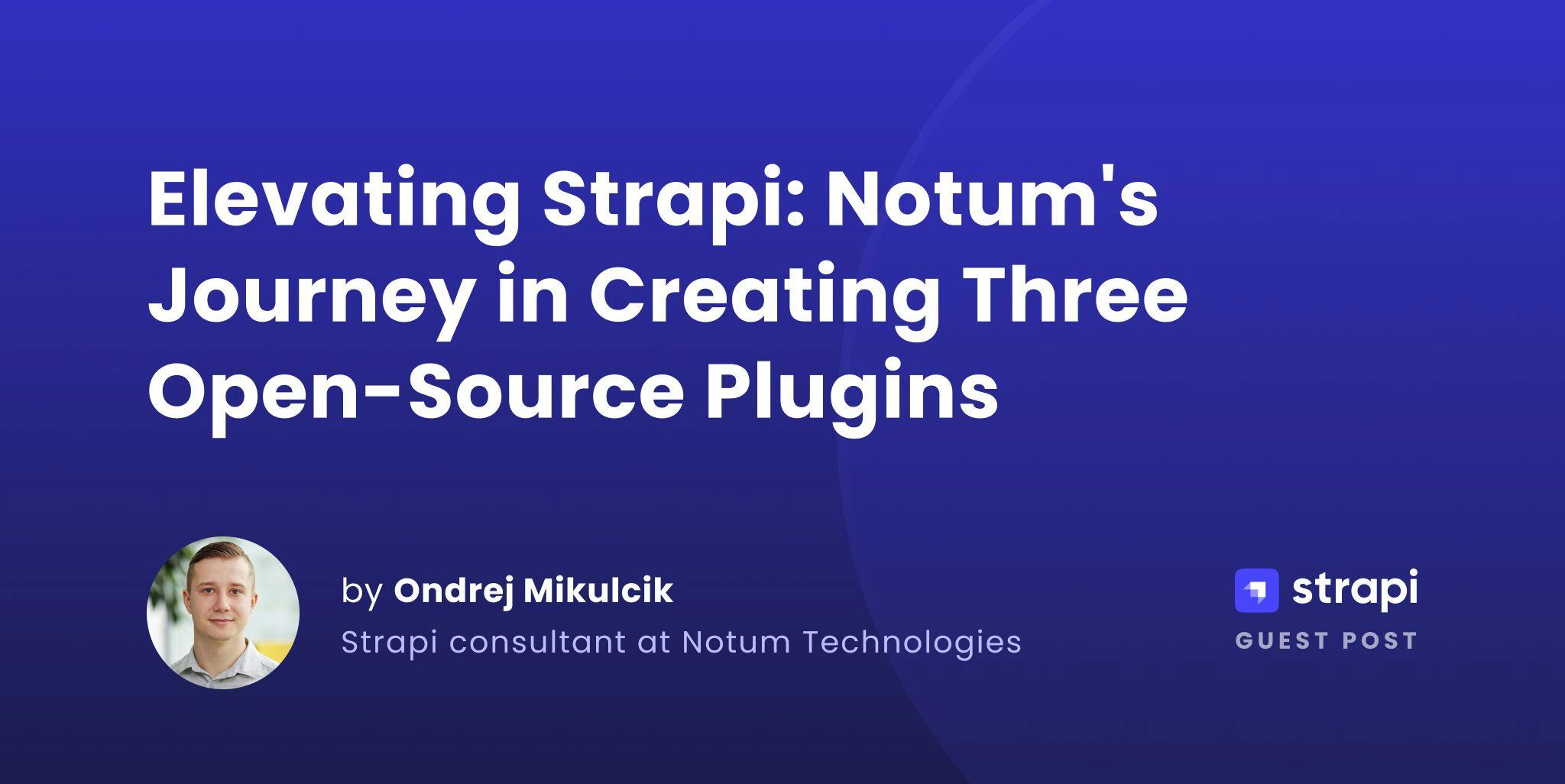

Strapi plays a pivotal role in digital transformation by providing a flexible, scalable, and user-friendly content management system that empowers organizations to adapt to the rapidly evolving digital landscape. As businesses seek to modernize their operations and enhance their digital presence, Strapi offers a robust foundation for managing and distributing content across various platforms and channels.
One of the key aspects of Strapi's contribution to digital transformation is its headless architecture. This approach decouples the content management backend from the frontend presentation layer, allowing organizations to deliver content seamlessly across multiple channels, including websites, mobile apps, IoT devices, and digital signage. This flexibility is crucial for businesses aiming to create omnichannel experiences and adapt quickly to new technologies and platforms.
Strapi's open-source nature and extensive plugin ecosystem foster innovation and customization. Organizations can tailor the CMS to their specific needs, integrating it with existing systems and workflows. This adaptability is essential for digital transformation initiatives, as it allows businesses to create bespoke solutions that align with their unique requirements and goals.
The platform's API-first approach facilitates seamless integration with various digital tools and services, enabling organizations to build comprehensive digital ecosystems. By leveraging Strapi's RESTful and GraphQL APIs, businesses can connect their content management system with analytics platforms, marketing automation tools, e-commerce solutions, and other critical components of their digital infrastructure. This integration capability is fundamental to creating cohesive and efficient digital experiences.
Strapi also addresses the growing need for agility in content creation and distribution. Its user-friendly interface empowers non-technical team members to manage content independently, reducing reliance on IT departments and accelerating time-to-market for digital initiatives. This democratization of content management is a crucial aspect of digital transformation, as it enables organizations to respond more quickly to market changes and customer needs.
Furthermore, Strapi's scalability supports the growth trajectory of organizations undergoing digital transformation. As businesses expand their digital footprint and content requirements increase, Strapi can accommodate growing volumes of content and traffic without compromising performance. This scalability ensures that the content management system can evolve alongside the organization's digital maturity.
Security is another critical consideration in digital transformation, and Strapi addresses this through robust authentication and authorization mechanisms. These features allow organizations to implement granular access controls and protect sensitive content, which is essential for maintaining data integrity and compliance in an increasingly regulated digital landscape.
Strapi's role in digital transformation extends to fostering collaboration and streamlining workflows. Its version control and content scheduling features enable teams to work more efficiently, ensuring that content is managed and published in a coordinated manner across various digital touchpoints. This capability is particularly valuable for organizations seeking to maintain consistency and coherence in their digital presence.
By leveraging Strapi, organizations can accelerate their digital transformation journey, creating more agile, efficient, and customer-centric digital experiences. The platform's flexibility, scalability, and focus on user empowerment make it a valuable tool for businesses looking to thrive in the digital age, enabling them to adapt quickly to changing market conditions and customer expectations.
Strapi's internationalization (i18n) feature provides a powerful solution for creating and managing multilingual websites and applications. This capability allows content creators to deliver localized experiences to diverse global audiences, enhancing user engagement and expanding market reach.
The internationalization process in Strapi begins with enabling the feature for specific content types. This granular approach allows developers to selectively localize content, optimizing performance by only internationalizing necessary elements. To enable internationalization for a content type, navigate to the Content Types Builder, select the desired content type, and activate the "enable localization" option in the advanced settings.
Once enabled, Strapi allows the creation of multiple locales, each representing a specific language or regional variant. For example, you can create separate locales for English (en), French (fr-FR), and Canadian French (fr-CA), allowing for nuanced content tailoring based on both language and geographical considerations. This flexibility is particularly valuable for businesses targeting multiple markets with distinct linguistic and cultural preferences.
Content management in Strapi's multilingual setup is streamlined through an intuitive interface. When creating or editing content, users can easily switch between locales, with the ability to automatically copy content from one locale to another as a starting point for translations. This feature significantly reduces the time and effort required for content localization.
For developers, Strapi's API supports multilingual content retrieval through both REST and GraphQL interfaces. To fetch localized content, simply include the locale parameter in API requests. For instance, to retrieve blog posts in French:
GET /api/blogs?locale=fr
For more advanced use cases, Strapi allows querying content across all locales or filtering by specific locales.When integrating Strapi with front-end frameworks like Next.js for multilingual websites, developers can leverage Strapi's API to dynamically fetch localized content. This approach enables the creation of seamless, performant multilingual user experiences. For example, using Next.js, you can implement dynamic routing based on the user's language preference and fetch the appropriate localized content from Strapi.
It's important to note that Strapi does not automatically translate content. Instead, it provides the infrastructure for managing translations, allowing content creators to input localized versions manually or integrate with third-party translation services.
For large-scale multilingual projects, Strapi offers features to enhance content management efficiency. The list view allows users to see all content for a specific locale and easily switch between locales, providing a comprehensive overview of available translations. Additionally, Strapi allows disabling localization for specific fields that should remain consistent across all language versions, such as numerical data or universal identifiers.
By leveraging Strapi's robust internationalization features, developers and content managers can create sophisticated multilingual digital experiences, ensuring that content resonates with diverse global audiences while maintaining a streamlined, efficient content management process.
Strapi excels in API-first development approaches, offering a robust platform for creating and managing APIs that serve as the foundation for scalable web applications. The API-first methodology prioritizes the design and implementation of APIs before building other components, enabling parallel development workflows and fostering a more flexible, modular architecture.
Strapi's headless CMS architecture naturally aligns with API-first principles, providing developers with powerful tools to create custom API endpoints quickly and efficiently. The platform offers both RESTful and GraphQL APIs out of the box, allowing developers to choose the most suitable approach for their project requirements.
One of Strapi's key strengths in API-first development is its ability to generate API endpoints automatically based on content types defined in the admin panel. This feature significantly reduces development time and allows for rapid prototyping. However, Strapi also provides the flexibility to create custom API endpoints when more specific functionality is required.
For instance, to create a custom API endpoint in Strapi, developers can use the built-in generators:
npx strapi generate api posts-report
This command generates the necessary files for a new API, including routes, controllers, and services. Developers can then customize these components to implement specific business logic or data transformations.
Strapi's API-first approach facilitates seamless integration with various front-end frameworks and technologies. This decoupling of the backend from the frontend allows development teams to work concurrently, with front-end developers able to start building user interfaces using mock APIs while backend developers finalize the actual API implementation.
Moreover, Strapi's API-first architecture promotes better scalability and maintainability. As the application grows, new features or integrations can be added by extending the API, without necessarily impacting existing front-end implementations. This modularity is particularly valuable for large-scale applications or when building a ecosystem of interconnected services.
The platform also provides robust authentication and permission systems, allowing developers to secure API endpoints and control access based on user roles. This built-in security feature is crucial for enterprise-grade applications and complements the API-first approach by ensuring that data access is properly managed at the API level.
In the context of automation and integration, Strapi's API-first approach enables easier creation of webhooks and integration with third-party services. This capability allows for the development of complex workflows and automated processes that can significantly enhance productivity and streamline operations.
By adopting Strapi in an API-first development strategy, organizations can create more flexible, scalable, and integration-friendly applications. This approach not only accelerates development cycles but also future-proofs applications by providing a solid foundation for evolving digital ecosystems.
While no solution is one-size-fits-all, STRAPI's core purpose is to boost your team's productivity and free up precious developer resources.
If you'd like to explore whether it aligns with your project's needs, our experts are ready to guide you.
As Notum Technologies we are the Strapi agency partner, offering specialized expertise in web and mobile application development. We have privileged access to upcoming features. Our team of over 40 developers, including Strapi experts, is committed to maintaining long-term partnerships with clients.
Our proficiency extends beyond implementation, as they actively contribute to Strapi's ecosystem by creating custom plugins, some of which are among the most popular on the Strapi Market.
We were the guys developing migration scripts from Strapi v3 to v4.

We're Notum Technologies:
✔️ Official STRAPI agency in Europe and America, based in the Czech Republic.
✔️ We offer custom STRAPI development, consultations, web, and mobile apps.
✔️ With 40+ completed STRAPI projects, many workshops, open communication, and great project management, we have the tools to make your project a success.
